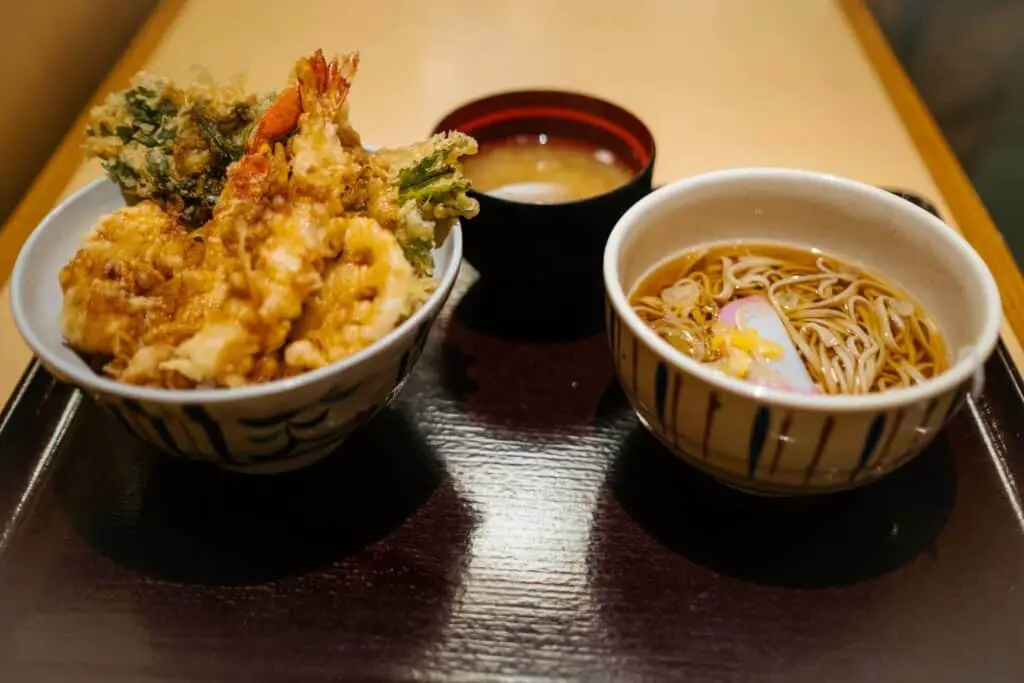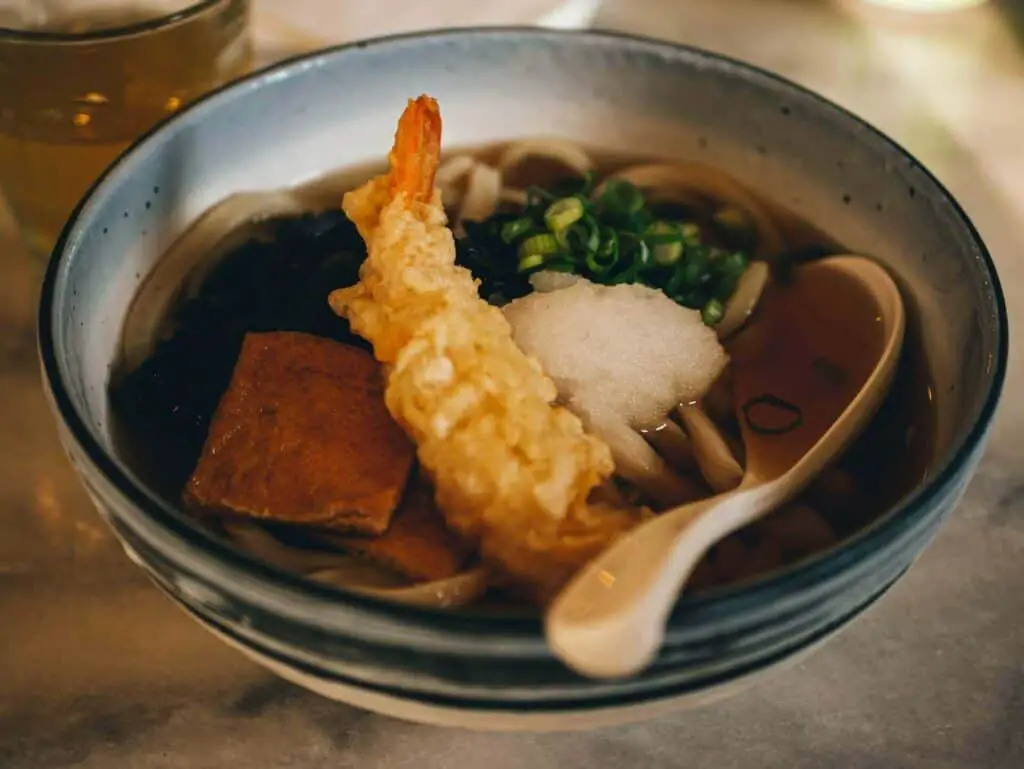Japanese tempura is usually ordered as a side dish at a restaurant or prepared as a snack at home since it requires few ingredients and little time to cook. If you enjoy this delicacy, you might have seen other kinds of dishes, especially soups, which include tempura, so one might ask – “What is tempura soup?”.
Tempura soup is a combination of two dishes – udon and tempura (in many restaurant menus, the recipe will be called “tempura udon soup”). It bears many similarities to ramen since it has noodles, broth, and toppings. However, all three main ingredients differ greatly in taste, texture, and cooking process from the ramen ones, which makes tempura soup a unique Japanese recipe.


Tempura Soup Is a Japanese Recipe That Combines Different Traditional Dishes and Ingredients
Although present nowadays in almost every Japanese restaurant, tempura soup is a mix of a few different traditional Japanese dishes. Since it has a similar appearance to ramen, one might think that it is a new variation of this famous Japanese dish. However, the ingredients and broth differ completely from ramen, and here are the main differences:
- Udon noodles used in this recipe are different from ramen noodles in size and texture. They are much thicker and chewier than ramen noodles and have been used in traditional Japanese dishes like “kake udon,” “oyako udon,” and “nabeyaki udon.”
- If you have enjoyed traditional ramen before, then you probably know that the broth is made by boiling pork and chicken bones until they completely dissolve. However, the broth from the tempura soup recipe is different as it requires completely different ingredients and less cooking time. One could say that the consistency is much closer to the traditional Western soup.
- Finally, the main ingredient is tempura shrimp (mostly used in recipes like shrimp tempura roll). Although nowadays there are many innovative ramen recipes, and there is most certainly one with tempura shrimp, it is not a traditional ramen topping.
This Recipe Is Easy to Make and It Requires Little Time
At first, seeing that this recipe combines different dishes, you might have thought that the cooking process is probably complicated. However, that is not the case. All three parts of the dish are easily prepared, and here is how to do it.
| Noodles | If you decide to make udon noodles from scratch, you will need wheat flour, salt, water, and potato starch. For one serving, it is usually 100g of flour, a glass of water, and half a teaspoon of salt. Making the dough itself is easy – you just have to knead it like any regular pizza dough. However, in order to achieve the specific udon chewy texture, the dough has to sit for around four hours, and in between, it should be kneaded again at least two times more. Finally, the dough should be spread and cut into thicker vertical pieces. Of course, you can bypass making homemade noodles if you don’t have time by visiting your local Asian store and buying them. In order to boil them properly, once you start making your broth, they should be placed in the boiling broth (the broth should, at this point, be completely seasoned) for around ten minutes. |
| Broth | The broth is made with soup stock, and if you want to follow the Japanese recipe, dashi stock is required (made from kelp seaweed and dried bonito flakes). The preparation process is simple. You boil the water, then lower the temperature and add the stock. It should simmer for around fifteen to twenty minutes. In the meantime, you should add soy sauce (according to your taste) and mirin (some people like to add sugar instead). Finally, as mentioned, udon noodles are added. However, there is a chance that dashi soup stock might not be available at your local stores. In this case, there is no problem in using regular chicken stock, for example. The taste will be different but equally enjoyable. |
| Toppings | The main topping is tempura shrimp. Again, you can choose either to find some frozen shrimp prepared for tempura (meaning that it is already coated in batter and ready to be deep-fried) or buy fresh produce and prepare the batter yourself. The latter process will certainly take more time as you will probably have to clean and peel off their shells. The batter is a standard mix of eggs, flour, and water (breadcrumbs are not part of the traditional recipe). Once you have deep-fried the shrimps and successfully combined noodles and broth, simply place the shrimps on top. However, there are usually other toppings as well, which make this dish even more exciting. The most usual ones are fish cakes, “kamaboko”(steamed fish paste,) scallions, and soft-boiled eggs. People also like to add more seasonings on top, and the most common are chili powder and pepper. However, as with modern ramen, you can pretty much add anything you like as a topping. One of the newest creations is the vegetarian version of this dish, where shrimps are substituted with deep-fried vegetables (usually aubergines or courgettes). |

Tempura Soup Is Definitely Worth Trying
Japanese cuisine has become one of the most popular in the world, and nowadays every town has at least one sushi bar. However, recipes like tempura soup are definitely worth trying as well, as they can introduce you to a completely different spectrum of flavors. On top of that, Japanese dishes are generally considered to be healthier than the majority of Western fast-food recipes. Hence you should consider substituting your burger with a tempura soup from time to time.